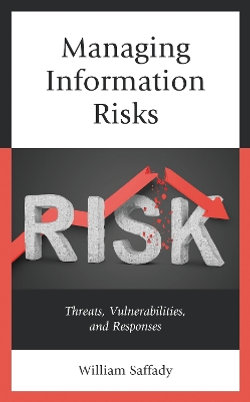An opening chapter defines and discusses risk terminology and concepts that are essential for understanding, assessing, and controlling information risk. Subsequent chapters provide detailed explanations of specific threats to an organization's information assets, an assessment of vulnerabilities that the threats can exploit, and a review of available options to address the threats and their associated vulnerabilities. Applicable laws, regulations, and standards are cited at appropriate points in the text. Each chapter includes extensive endnotes that support specific points and provide suggestions for further reading.
While the book is grounded in scholarship, the treatment is practical rather than theoretical. Each chapter focuses on knowledge and recommendations that readers can use to:
- heighten risk awareness within their organizations,
- identify threats and their associated consequences,
- assess vulnerabilities,
- evaluate risk mitigation options,
- define risk-related responsibilities, and
- align information-related initiatives and activities with their organizations' risk management strategies and policies.
Compared to other works, this book deals with a broader range of information risks and draws on ideas from a greater variety of disciplines, including business process management, law, financial analysis, records management, information science, and archival administration. Most books on this topic associate information risk with digital data, information technology, and cyber security. This book covers risks to information of any type in any format, including paper and photographic records as well as digital content.




Share This Book: